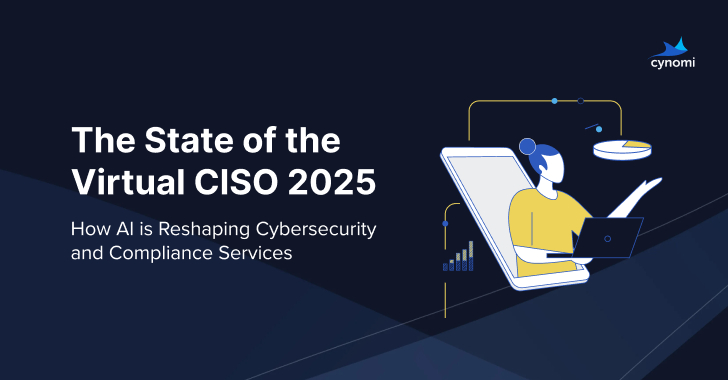
ERP/WMS Redeployment for a Decentralized Supply Chain
In an ever-evolving world of commerce and logistics, businesses are constantly seeking ways to optimize their supply chain management. The shift towards a decentralized supply chain has gained momentum, driven by the need for increased flexibility, agility, and resilience. This transformation necessitates a reevaluation of existing Enterprise Resource Planning (ERP) and Warehouse Management Systems (WMS). In this article, we will explore the concept of a decentralized supply chain and discuss the importance of ERP/WMS redeployment to successfully navigate this new landscape.
The Decentralized Supply Chain: A Paradigm Shift
Traditionally, supply chains have been centralized, with a single location or hub handling most of the processes, from manufacturing to distribution. However, this model has its limitations, especially in today’s fast-paced and unpredictable business environment. The decentralized supply chain flips the script by dispersing operations across various locations, allowing companies to respond swiftly to market fluctuations, reduce risks, and improve customer satisfaction.
The COVID-19 pandemic highlighted the vulnerabilities of centralized supply chains, as disruptions in one region could ripple through the entire network. Decentralization addresses this vulnerability by distributing operations, making it easier to adapt and absorb shocks.
Challenges of Decentralization
While decentralization offers many advantages, it comes with its own set of challenges, particularly in the realm of supply chain management. Here are some key hurdles that companies must overcome:
- Coordination Complexity: Managing multiple locations can be complex. Ensuring that all locations work seamlessly together and share accurate data is crucial.
- Inventory Optimization: With inventory spread across various locations, maintaining optimal stock levels becomes challenging. Overstocking or understocking at any site can result in inefficiencies and increased costs.
- Data Integration: Real-time data is essential for informed decision-making. Integrating data from diverse sources across the decentralized network is a significant IT challenge.
- Cost Efficiency: Managing multiple warehouses or manufacturing sites can be costlier than a centralized approach if not done efficiently.
The Role of ERP and WMS
Enterprise Resource Planning (ERP) and Warehouse Management Systems (WMS) play a pivotal role in the successful operation of any supply chain. When transitioning to a decentralized model, companies need to reevaluate and redeploy these systems to align with the new structure. Here’s why:
- Data Integration: ERP systems serve as a central repository for data, enabling seamless communication between various locations. Redeploying ERP systems ensures that data is accessible and accurate across the decentralized supply chain.
- Inventory Management: A well-configured WMS is essential for efficient inventory management. Redeploying or enhancing WMS can help optimize inventory levels at each location while maintaining visibility and control.
- Process Standardization: Decentralization often leads to process variations between locations. ERP systems can enforce standardized processes, ensuring consistency and compliance across the supply chain.
- Cost Control: By analyzing data from ERP and WMS systems, companies can identify cost-saving opportunities and make informed decisions about resource allocation.
Key Steps in ERP/WMS Redeployment
Redeploying ERP and WMS systems for a decentralized supply chain requires careful planning and execution. Here are the key steps to consider:
- Assess Current Systems: Begin by evaluating your existing ERP and WMS systems. Identify strengths and weaknesses, and determine if they can support a decentralized supply chain.
- Define Objectives: Clearly define your objectives for the redeployment. What do you want to achieve with the new system configuration? Improved data visibility, enhanced inventory control, and streamlined processes should be on the list.
- Select the Right Software: If your current systems are not up to the task, consider investing in new ERP and WMS software that can meet the demands of a decentralized supply chain.
- Data Migration: Migrating data from your old system to the new one is a critical step. Ensure that data is clean, accurate, and compatible with the new software.
- Configure for Decentralization: Work closely with your software provider or IT team to configure the ERP and WMS systems to accommodate decentralized operations. This may involve setting up multiple instances or modules that can communicate seamlessly.
- Standardize Processes: Define standardized processes and workflows that all locations should follow. The ERP system can enforce these standards and provide real-time visibility into compliance.
- Training and Change Management: Train your employees on the new systems and processes. Change management is crucial to ensure smooth adoption across the organization.
- Continuous Monitoring and Improvement: After redeployment, continuously monitor system performance and gather feedback from users. Make adjustments and improvements as necessary to optimize the systems further.
Case Study: Successful ERP/WMS Redeployment
Let’s take a look at a real-world example of a company that successfully redeployed their ERP/WMS systems for a decentralized supply chain.
XYZ Electronics, a global electronics manufacturer, decided to transition to a decentralized supply chain model to reduce risks associated with geopolitical tensions and natural disasters. They chose to redeploy their ERP and WMS systems to support this transformation.
- Assessment: XYZ Electronics conducted a thorough assessment of their existing systems and identified gaps in data visibility and inventory control.
- Objectives: They set clear objectives, including improving data accuracy, optimizing inventory levels, and reducing lead times.
- Software Selection: After evaluating several ERP and WMS providers, they selected a cloud-based solution known for its scalability and robust data integration capabilities.
- Data Migration: XYZ Electronics invested in data cleansing and migration to ensure that historical data was available in the new system.
- Configuration: The software provider worked closely with XYZ Electronics to configure the system for decentralized operations, setting up individual modules for each manufacturing and distribution site.
- Standardization: They defined standardized processes and workflows, which the ERP system enforced, ensuring consistent operations across all locations.
- Training and Change Management: Employees received comprehensive training on the new systems, and a change management team was established to address any issues or concerns.
- Continuous Improvement: XYZ Electronics continually monitored system performance and gathered feedback from users. They made refinements to the system configuration based on user input and evolving business needs.
As a result of their ERP/WMS redeployment, XYZ Electronics experienced significant improvements in their supply chain operations. Lead times were reduced by 20%, inventory holding costs decreased by 15%, and data accuracy improved to 98%.
Conclusion
In a world where agility and adaptability are key to survival, the shift towards a decentralized supply chain is becoming a strategic imperative. Redeploying ERP and WMS systems is a critical step in ensuring that your organization can thrive in this new paradigm. By assessing your current systems, defining clear objectives, and following best practices for redeployment, you can harness the full potential of a decentralized supply chain, reduce risks, and drive operational excellence. Remember, in today’s dynamic business environment, staying ahead requires more than just keeping up; it demands a proactive and strategic approach to supply chain management.
Contact Cyber Defense Advisors to learn more about our ERP/WMS Redeployment solutions.





